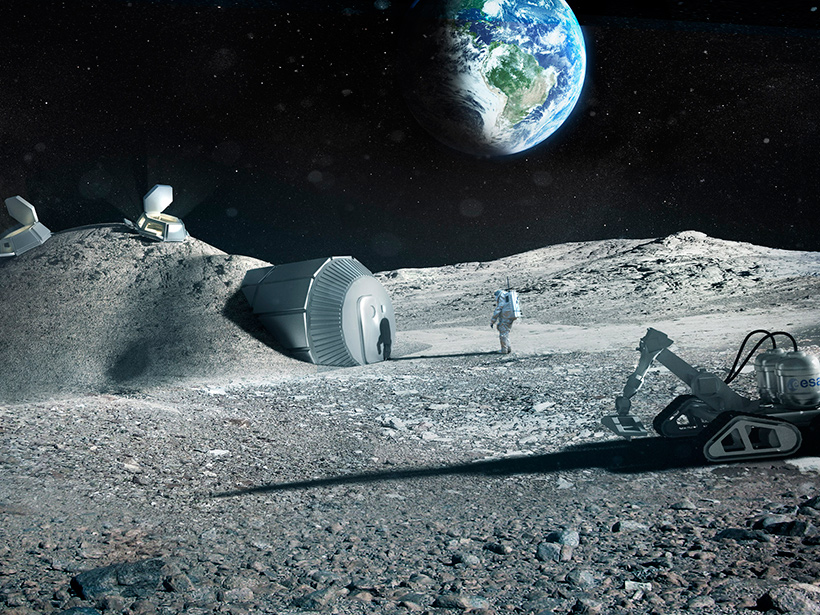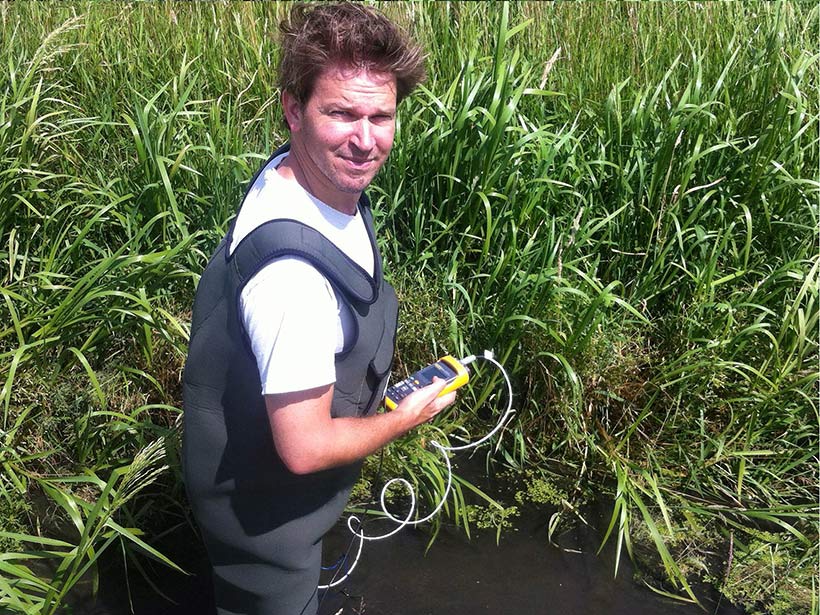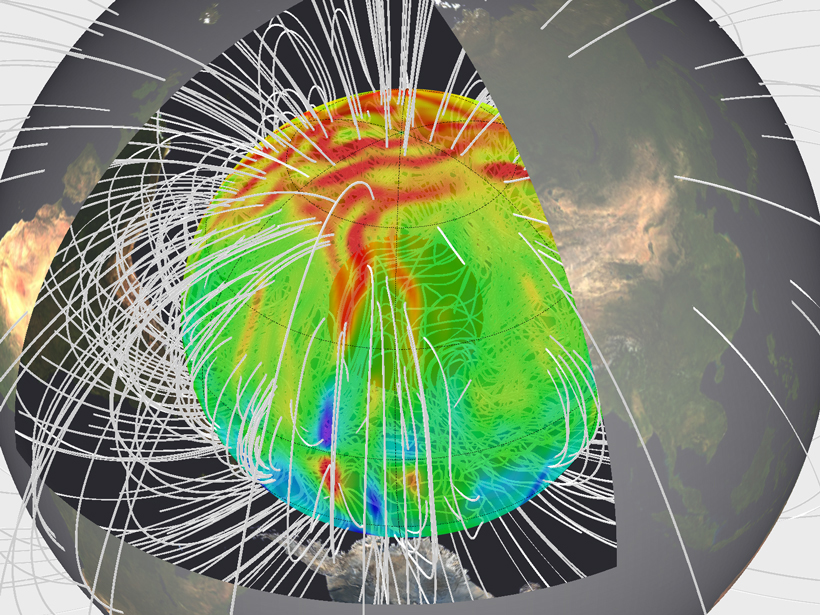Scientists use a new remote-controlled robot to capture data from the middle of an open ocean typhoon.
cool tools
Unifying Ocean Data into One Searchable Set
A new system called SeaView integrates data from five online ocean data sets, helping to paint a more detailed picture of the world's oceans.
Scientists Spend Arctic Winter Adrift on Sea Ice
A hovercraft-based ice drift station gives researchers access to previously inaccessible regions of the changing Arctic sea ice cover off the coast of Greenland.
New Technique Tracks Rock Deformation at a Micrometric Scale
Scientists explore microscopic marble deformation at high pressures and temperatures using a novel experimental technique that could improve our understanding of rock deformation in nature.
Tiny, Deep Quakes Increase on San Andreas as Tides Tug on Fault
When the gravity of the Sun and Moon causes Earth's crust to bulge every 2 weeks, slow-moving earthquakes proliferate in the lower reaches of the San Andreas, a new study finds.
Novel Technique Finds New Features Under United States
A new high-fidelity tomography harnesses USArray data to expose a wealth of noteworthy crustal and upper mantle structures, including previously unknown anomalies beneath the Appalachians.
Could 3-D Printers Create Shelters for Future Lunar Settlers?
Test of a novel solar-powered printer yielded a prototype construction brick made from simulated lunar soil.
Storms Cause Infrequent Turbulence for Aircraft, New Study Finds
Scientists using lightning sensors to automate air-turbulence detection have found evidence that storms jostle aircraft much less than previously thought.
Temperature-Sensing Overalls Offer Scientific Promise
In a proof-of-concept experiment, researchers test out how well a pair of fisherman's waders can sense changes in water temperature.
Which Geodynamo Models Will Work Best on Next-Gen Computers?
A new study uses identical tests to evaluate the accuracy and performance of current models of Earth's magnetic field, then extrapolates the results to anticipated "petascale" supercomputers.










